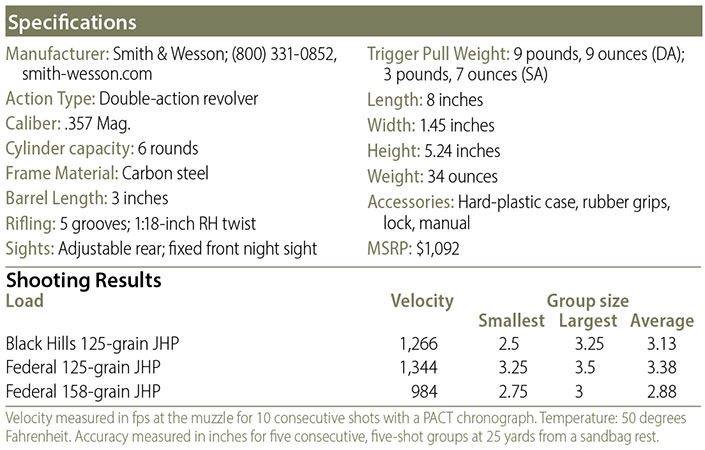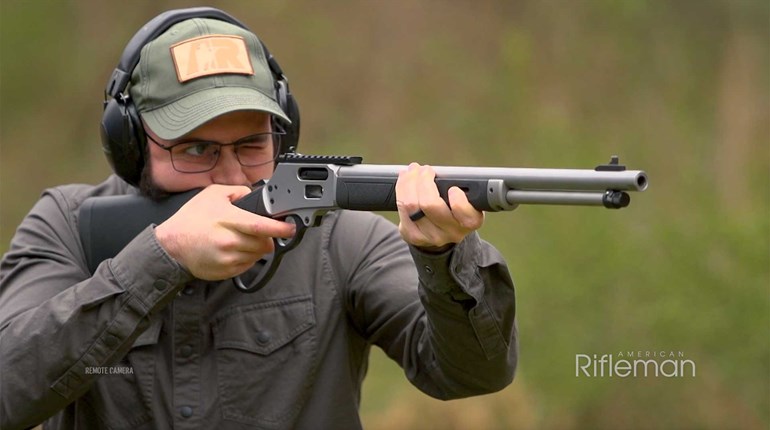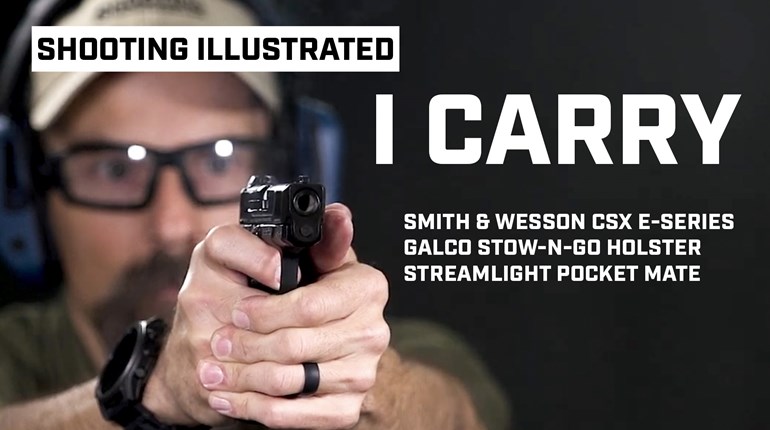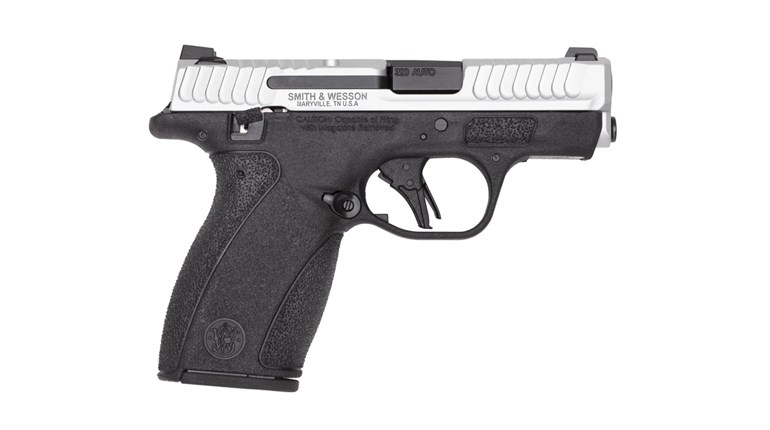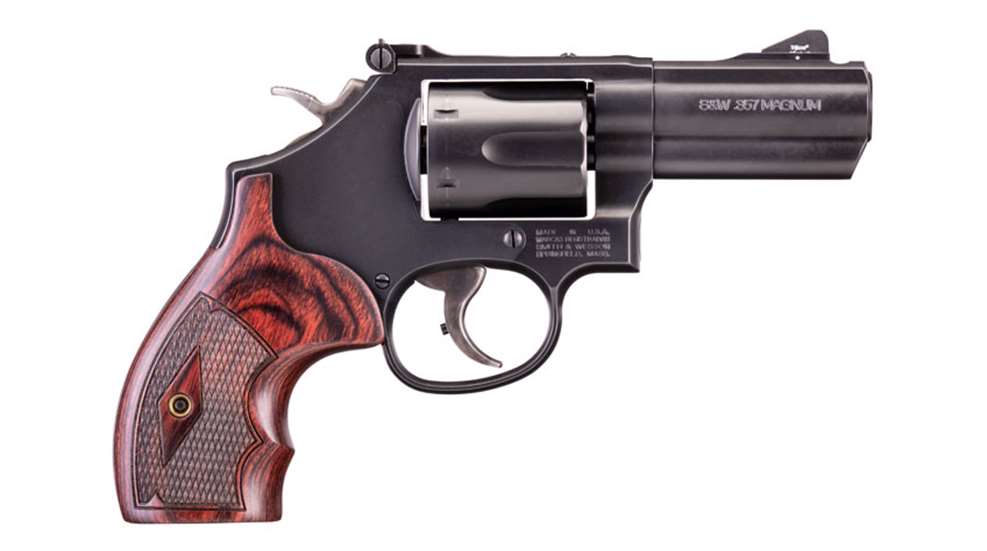
In 1956, Smith & Wesson introduced the Model 19 Combat Magnum. Former World War II Marine and longtime Border Patrol agent Bill Jordan was instrumental in the design of the Combat Magnum. Jordan was a phenomenal handgun shooter, and developed a reputation as a real quick-draw artist. The new revolver was basically the same as the Model 27, but in a smaller form. The Model 19 retained all of the sophistication of the Model 27, including excellent fit and finish. Though the Model 19 was extremely well made, some shooters were concerned that the smaller frame and cylinder wouldn’t stand up to the pressures of the potent .357 Mag. This notion was dispelled after the revolver had been on the market for a few years.
One of the most exciting new products introduced in 2018 was a wheelgun unveiled by Smith & Wesson. The company reintroduced the Model 19, and it made a lot of shooters pretty happy, including me. I had the chance to briefly handle one of the new 19s at the SHOT Show that year, and was quite pleased with it. The revolver was identical to the original Model 19, with the exception of the integral frame-mounted key lock just above the cylinder latch. The stocks (aka grips) were slightly different, too, but in a positive way.
Another version of the Model 19 is available from the firm’s Performance Center, and I recently got my hands on one for some shooting and evaluation. This version is called the Carry Comp (CC), and is a 3-inch, round butt that’s built to the exacting standards of that custom shop.
At first glance, the Model 19 Carry Comp is a fine-looking revolver, and in looking over its special features, it gets better and better. As I mentioned, I like short, snubby revolvers, and the CC fits that bill. Designed with concealed carry in mind, this little revolver has everything going for it. The Model 19 Carry Comp is, of course, designed around a revised K-frame revolver. Its barrel is 3 inches, a half-inch of which is actually a compensator, which really makes the barrel 2.5 true inches. At the end of the barrel, on the upper side, is the comp, aka a one-slot power port. The front sight is set just behind the port, approximately a quarter inch behind the muzzle. The sights are fine examples of traditional Smith & Wesson, the front blade being sloped and serrated, with a tritium dot insert. The rear sight is all-black and adjustable. I was very pleased with this configuration and found it to be highly practical. I’ve always been a fan of the firm’s adjustable sights, and even have them on other brands of handguns.

The traditional Model 19 hammer was rectangular with checkering, while the MOdel 19 Carry Comp hammer is tapered toward the rear and checkered. This shape change was meant to facilitate concealed carry, as is the revolver’s grip frame, which is rounded and shortened. The gun shipped with a nice set of checkered composite wood stocks. (A set of rubber stocks were included in the box.) The wooden grips are a little short. My right pinky rests underneath the grips, a position that takes a little getting used to.
One difference between the Carry Comp and the vintage Model 19 is the lockup in the crane, which features a ball detent for enhanced reliability. The Performance Center did a great job slicking up the action. The double action was quite smooth and the single action dropped cleanly at about 3.5 pounds measured by my RCBS scale.
Shooting the Model 19 Carry Comp was a hoot. I started with Black Hills 125-grain JHP ammunition, shooting at my steel plate at various distances. The gun handled very well and recoil was manageable, though the little wheelgun had quite a muzzle blast using the hot Federal stuff. I found that even though the barrel is short, it had enough muzzle weight to make the gun easy to shoot.

One suggestion I would make to the Performance Center would be to offer the Model 19 Carry Comp with the hammer spur removed entirely. The rounded corners of the existing hammer are OK, but complete removal would be a boon for concealed carry. Some revolver shooters believe that a bobbed hammer can’t be easily cocked, but this isn’t the case. Starting the hammer back in double action places it in the ball of the thumb, at which point it can be easily cocked to fire the handgun in single-action mode.
The Model 19 Carry Comp is a highly developed piece of work. As a primary defense gun, it will certainly suffice, especially for people who prefer the simplicity of a purpose-built revolver.
I’m pleased with Smith’s reintroduction of the fine Model 19, and I hope production continues for a long time to come. Sure, there are plenty of other good revolvers out there, but the Model 19 is a stellar example of classic Americana.
